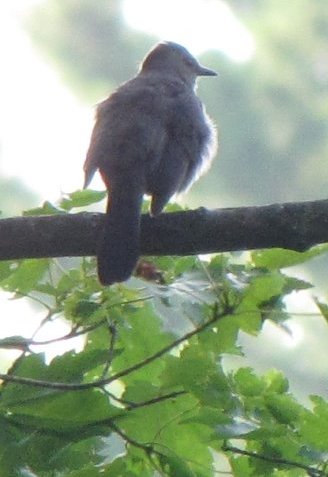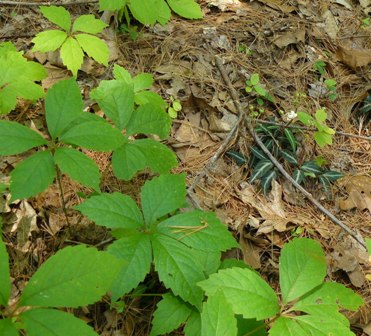Baby birds are everywhere. Listen for plaintive calls and watch parent birds with bills full of food deliver it to babies as large as they are. How can you tell? Baby birds look like the don’t know what to do yet and often have fuzzy feathers with smudged looking markings. This young Gray catbird was spotted on this week’s Fair Weather Birding walk perched on a branch, looking into the distance, perhaps hoping for a food delivery soon.
Another sign of the season is mushrooms. Boletus mushrooms have thick, fleshy caps with pores on the underside instead of gills or teeth like other mushrooms. Chipmunks especially enjoy nibbling the caps and leave tooth marks like these.
 On the forest floor Striped wintergreen has a waxy white flower and shares the space with another native plant, Virginia creeper. The creeper has five leaflets and often grows where poison ivy grows, but poison ivy has only three leaflets. Virginia creeper’s name in Latin, Parthenocissus quinqifolia means five-leaved.
On the forest floor Striped wintergreen has a waxy white flower and shares the space with another native plant, Virginia creeper. The creeper has five leaflets and often grows where poison ivy grows, but poison ivy has only three leaflets. Virginia creeper’s name in Latin, Parthenocissus quinqifolia means five-leaved.
In the fields, Queen Anne’s Lace is in bloom. It was introduced long ago from Europe and one story says that Queen Anne was sewing lace and pricked her finger. A drop of blood fell into the center of the lace so there is one purple-red flower in the center of the flower.




